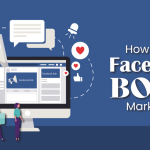What is a book marketing plan?
A book marketing plan includes publicity and promotional techniques to increase book sales and readership. Whether it’s fantasy, children’s literature, or nonfiction, efficient marketing strategies are essential for reaching a wider audience. Key marketing services, such as media coverage, book tours, and social media promotion, have a substantial impact on book sales. It is usual practice to hire a professional publicist to manage and execute numerous marketing activities, both in-person (panels, book launches, tours) and digital (webinars, SEO optimisation, targeted banner advertisements). To maximise a book’s exposure and connection with readers, successful book marketing combines conventional and digital initiatives.
Before you create or work towards a marketing plan you need to make sure that the ground work is concrete
You should be well aware of who your target audience is
A successful book launch begins with a thorough grasp of your target demographic. Take the time to learn about your potential readers’ demographics, hobbies, and preferred platforms. Consider your target reader’s age, occupation, and interests. If your book is a young adult fantasy novel, for example, your target audience may be teens and young adults who like vivid, imaginative worlds.
Investigate their hobbies and preferences further. Consider where these people spend their free time if your novel is about adventure and camaraderie. Do they use social media sites such as Instagram and TikTok, or do they participate in specialised online communities? Knowing these facts helps you to successfully personalise your marketing efforts.
If your target audience consists of young people who are keen Instagram users, for example, focus on visually appealing material and popular book-related hashtags. Participate actively in conversations about your book if they frequent online book clubs or forums.
By tailoring your marketing techniques to your target readership’s likes and habits, you boost your chances of grabbing their attention and developing a true relationship with your book. This fundamental step lays the groundwork for an engaging and impactful book launch.
You may also like: Negative Adjectives to Describe People: Examples and Meanings
You need to be well aware of your book’s unique selling point
To stand out in a competitive market, you must create a unique selling proposition (USP) for your book. Your USP is the lighthouse that draws readers to your work by emphasising its uniqueness and the value it provides. This might be due to a unique story viewpoint, an exceptional writing style, or the knowledge you bring to the subject.
As an example, consider J.K. Rowling’s “Harry Potter” trilogy. Rowling’s unique selling point is her ability to merge the fantastic with the mundane, creating a universe that captivates both youngsters and adults. Her work stands out in the fantasy genre because of the unique tale aspect of a young wizard’s quest that resonates beyond generations.
Alternatively, your USP may be a distinct writing style that creates a lasting impression on readers. For example, Haruki Murakami is well-known for his surreal and dreamy storylines, which create an ambient experience that sets his works like “Norwegian Wood” apart from traditional fiction.
You may also like: Archangels Names List: Meanings, Powers, and Symbolism
You should set clear goals for your marketing plan to work
Setting defined, quantifiable, and reasonable goals is the foundation of a successful book marketing strategy. These objectives act as a guidepost for your efforts and provide measurable criteria for achievement. Whether you want to increase your book sales, get more good reviews, or build your author platform, being clear about your goals is essential.
For example, if your objective is to sell a certain number of books in the first month of release, make it precise, such as “sell 1,000 copies.” This objective is measurable and gives you a concrete target to strive towards, allowing you to assess your progress and alter techniques as needed.
Similarly, obtaining favourable feedback may be a measurable oal. Aim for a specified amount of reviews on sites such as Amazon or Goodreads, and make sure they add to your book’s overall exposure and trustworthiness.
Setting a target of gaining social media followers by 20% within a certain timeframe might be one way to broaden your author platform. This clear and quantifiable goal helps you concentrate on developing a community around your business.
Setting realistic objectives ensures that they are attainable within the resources and time available to you. This strategic approach not only directs your marketing activities, but it also serves as a framework for measuring the performance of your strategy as you move towards these clearly stated goals.
Once these things are in order, you can create a marketing plan according to your goals. You can either get an agency to market you so they can customise your marketing plans or you can choose couple of strategies written below and start the plan at your own pace.
- Get going on Social Media (example: #Bookstagram)
- Content marketing (example: author blog)
- Email marketing (example: exclusive newsletter content)
- Virtual Book Launch (Example: Online Events)
- Influencer Collaborations (Example: Book Reviews)
- Book tours (example: cross-country tour)
- Paid advertising (example: Amazon ads)
- Collaborate with bookstores (example: in-store events)
- Utilise book giveaways (example: Goodreads giveaways)
- Podcast Appearances (Example: Author Interviews)
Get going on Social Media (example: #Bookstagram)
Connect with your audience through social media sites. Instagram, which is recognised for its active book community under the hashtag #Bookstagram, provides a visual area to promote your book. Share visually appealing photographs, interact with readers, and connect with influencers to broaden your reach.
Content marketing (example: author blog)
Make intriguing material on the subjects of your book or your writing journey. On your author website, have a blog where you may offer ideas, behind-the-scenes anecdotes, and related articles. Neil Gaiman’s blog, where he connects his readers with personal experiences and writing guidance, is an outstanding example.
Email marketing (example: exclusive newsletter content)
Create and manage an email list to allow you to communicate directly with your readers. To entice members, provide special material like as sneak peeks, supplementary chapters, or author Q&A sessions. Tim Ferriss uses email marketing efficiently to engage his audience and deliver exclusive information connected to his books.
Virtual Book Launch (Example: Online Events)
Include a virtual book launch in your marketing strategy. Use services such as Zoom, Facebook Live, or Instagram Live to host online events. Use live Q&A sessions, virtual book readings, or interactive challenges to engage your audience. With a virtual event, best-selling author Marie Forleo effectively launched her book “Everything is Figureoutable” to a global audience.
Influencer Collaborations (Example: Book Reviews)
Use influencers in your genre to help spread the word about your book. Send early review copies to book bloggers and influencers. Positive recommendations from credible sources may boost your book’s reputation and help it reach a broader audience.
Book tours (example: cross-country tour)
Consider going on a book tour, either physically or virtually. Visit bookshops and libraries, or join online book club discussions. J.K. Rowling’s extended book tours for the Harry Potter series were critical in generating anticipation and engaging with fans all around the world.
Paid advertising (example: Amazon ads)
To increase visibility, invest in targeted sponsored advertising. Platforms such as Amazon provide advertising alternatives customised exclusively to authors. Use tailored adverts to reach out to potential readers based on their interests and purchasing habits. Mark Manson, the author of “The Subtle Art of Not Giving a F*ck,” used online advertising to help his book become a best-seller.
You may also like: 150+ Positive Words That Start with O to Brighten Your Vocabulary
Collaborate with bookstores (example: in-store events)
Establish partnerships with local booksellers to provide in-store events or book signings. Engage your community and take use of the bookstore’s current consumer base. Celeste Ng, author of “Little Fires Everywhere,” routinely engages with independent bookshops in order to enhance her relationship with readers
Utilise book giveaways (example: Goodreads giveaways)
Organise book giveaways to generate interest. Authors may organise giveaways on platforms like Goodreads, reaching an audience that is actively looking for new books. This method not only raises awareness but also gets early feedback. Brandon Sanderson, a fantasy novelist, expertly uses freebies to engage his fans.
Podcast Appearances (Example: Author Interviews)
To reach a larger audience, take part in podcast interviews. Identify and distribute podcasts that are relevant to the genre or topics of your book. Cheryl Strayed, author of “Wild,” became well-known through podcast interviews, broadening her following beyond traditional readers.
Read: How to Self-Publish an eBook and Sell It Online: A Comprehensive Guide
A good book marketing strategy entails a deliberate blend of these several techniques, each suited to your specific aims and audience. Whether you work with a marketing firm or do it yourself, the key is to be adaptive, track your results, and alter your plans depending on real-time feedback. By incorporating these tried-and-true strategies into your strategy, you will not only increase the exposure of your book, but also create a lasting relationship with your readership, creating the groundwork for long-term success as an author.
Publish your book with BlueRoseONE and become a bestselling author. Don’t let your dream of becoming an author fade away, grab the opportunity now and publish your book – be it fiction, non fiction, poetry or more.















